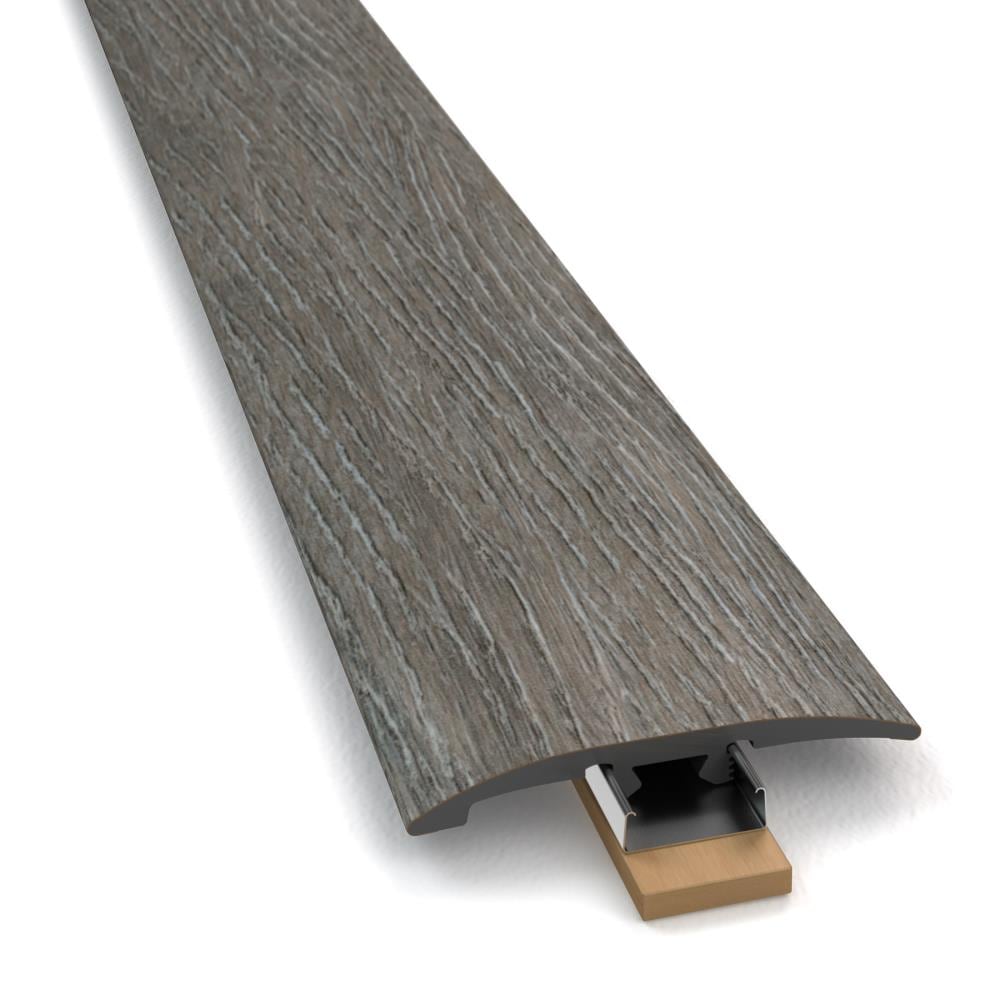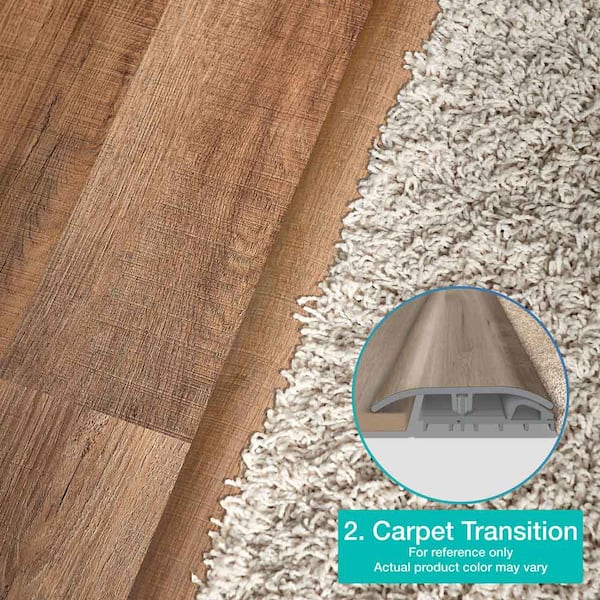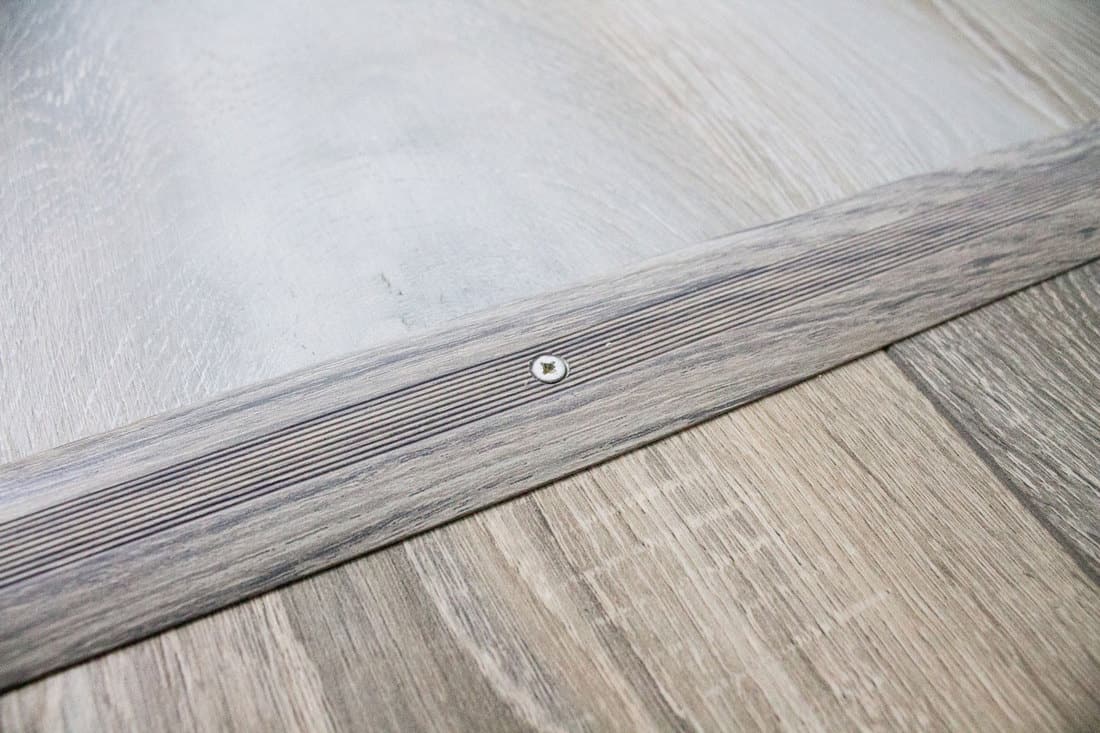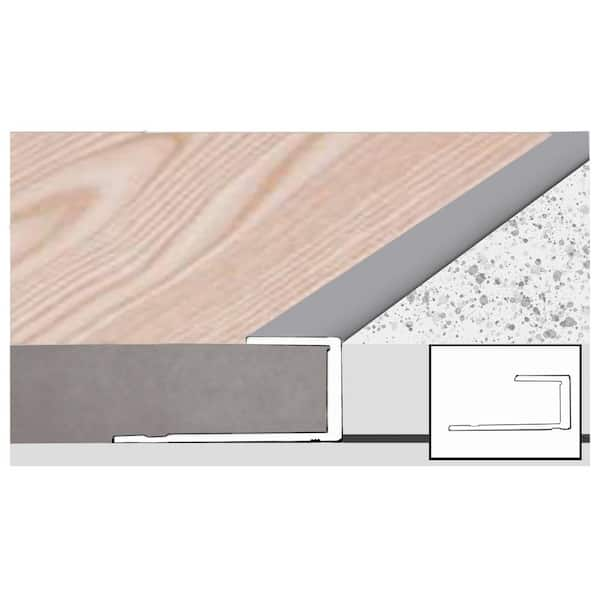When installing vinyl flooring, one essential element to consider is the transition trim. Vinyl floor transition trim is a versatile and practical accessory that helps create a seamless connection between different flooring surfaces, such as vinyl to carpet, vinyl to tile, or hardwood. We will explore the importance and benefits of using vinyl floor transition trim. I will guide you through its various aspects to ensure your flooring project’s professional and polished finish.
Definition and Purpose: What is Vinyl Floor Transition Trim?
Vinyl floor transition trim, or transition strips or molding, is a narrow strip made from durable materials such as aluminum or PVC. Its primary purpose is to provide a smooth transition between two different types of flooring, hiding the gap or joint between them. Transition trim enhances the aesthetic appeal of your floors and serves as a functional element, preventing tripping hazards and protecting the edges of your flooring from wear and damage.
Types of Vinyl Floor Transition Trim: Choosing the Right Style
Vinyl floor transition trim has various styles and designs to accommodate different flooring transitions. The most common types include T-molding, reducer, threshold, and stair nosing. T-molding is used to join two floors of the same height, such as vinyl to vinyl or carpet. Reducer trim is ideal for transitioning from vinyl to a lower-height flooring surface, like vinyl, to hardwood or tile. Threshold trim is used for doorways or areas where the flooring changes, providing a clean and attractive transition. Stair nosing is specifically designed for staircases, ensuring safety and a smooth transition between vinyl floors and stairs.
When selecting the type of vinyl floor transition trim, consider the height difference between the two flooring surfaces, the overall design aesthetic, and the level of durability required. It’s important to choose a trim that matches your flooring and complements your space’s style.
Material Options: Durability and Style
Vinyl floor transition trim is available in various materials, each with its unique benefits. Aluminum trim is a popular choice due to its durability, strength, and resistance to wear and tear. It provides a sleek and modern look, suitable for contemporary or industrial-style spaces. PVC trim, on the other hand, offers flexibility, affordability, and easy installation. It can be found in various colors and finishes to match your vinyl flooring and seamlessly blend with your decor.
Consider the specific needs of your space when choosing the material for your vinyl floor transition trim. If durability is a priority or the trim will be exposed to high-traffic areas, aluminum trim may be the best option. For areas with less foot traffic or if budget is a concern, PVC trim can be a practical and stylish choice.

Installation Methods: Adhesive or Floating
Vinyl floor transition trim can be installed using different methods, depending on the type of trim and the specific flooring transition. Adhesive installation involves securing the trim to the floor using a strong adhesive. This method provides a permanent and secure bond, ensuring the trim stays in place for years. Floating installation, on the other hand, involves interlocking the trim with the flooring without using adhesive. This method allows for easy removal or replacement if needed.
When installing vinyl floor transition trim, following the manufacturer’s instructions and using the recommended installation method is important. This will ensure a proper and secure installation, allowing the trim to serve its purpose effectively.
Color and Finish: Coordinating with Your Flooring
Choosing the right color and finish for your vinyl floor transition trim is essential to achieve a cohesive and harmonious look. The trim should complement the color and style of your vinyl flooring while seamlessly blending with the surrounding decor. Some trim options come in various colors and finishes, allowing you to match them precisely to your vinyl flooring or create a contrasting effect for a more dramatic look.
Consider your space’s overall color scheme and design aesthetic when selecting the color and finish for your trim. A well-chosen trim can enhance the visual appeal of your flooring transition, creating a polished and professional finish.
Customization Options: Tailoring the Trim to Your Needs
Vinyl floor transition trim can be customized to fit specific requirements or design preferences. Some trim options can be cut to the desired length or width, allowing for a precise fit in unique or irregular spaces. Customization options include mitering the corners for a seamless transition around corners or creating a decorative effect with patterned or textured trims.
If you have specific design needs or want to add a personal touch to your flooring transition, consider the customization options available for the vinyl floor transition trim you choose. Consulting with a professional installer or trim supplier can help you explore the possibilities and find the best solution for your space.
Maintenance and Care: Keeping Your Trim Looking its Best
Regular maintenance and care are essential to ensure that your vinyl floor transition trim maintains its appearance and functionality. Cleaning the trim regularly with a mild detergent and soft cloth will help remove dirt, dust, and grime. Avoid using abrasive cleaners or harsh chemicals that can damage the trim’s surface. Additionally, inspect the trim periodically for any signs of wear or damage and address them promptly to prevent further issues.
By incorporating regular maintenance into your cleaning routine, you can keep your vinyl floor transition trim looking its best and prolong its lifespan.
Vinyl floor transition trim is crucial in achieving a professional and seamless transition between different flooring surfaces. With various types, materials, colors, and installation methods, you can find the perfect trim to match your vinyl flooring and complement your space. Whether you’re transitioning from vinyl to carpet, hardwood, or tile, vinyl floor transition trim provides a polished and functional solution that enhances the overall aesthetics of your floors.
Home DIY: How to Install Transition Strips on New Floor PartSelect.com
Transition Strips – A BuildDirect Guide BuildDirectLearning Center
PERFORMANCE ACCESSORIES Haze 0.31 in. T x 2 in. W x 78.7 in. L
Transition Strips
Flat Threshold Metal Transition Strips for Vinyl Floor Trim
Amazon.com: ZJMK Extra Wide Floor Transition Strip, PVC Doorway
How To Install Transition Strip On Vinyl Plank Flooring – Home
Transition Strips for Vinyl Flooring, Door Thresholds for LVT
Uncover How to Use Luxury Vinyl Plank Transition Strips
Your Guide to Flooring Transitions Americau0027s Floor Source
TrimMaster 8mm 1 in. x 84 in. Satin Silver Aluminum Square Shape
Rubber Floor Ramps
Related Posts:
- About Vinyl Flooring
- Retro Vinyl Floor Covering
- Fixing Vinyl Flooring
- Vintage Oak Vinyl Flooring
- Single Sheet Vinyl Flooring
- Dark Wood Effect Vinyl Flooring
- Terrazzo Vinyl Flooring
- How To Get Rid Of Stains On Vinyl Flooring
- Office Vinyl Flooring
- Silver Vinyl Flooring












